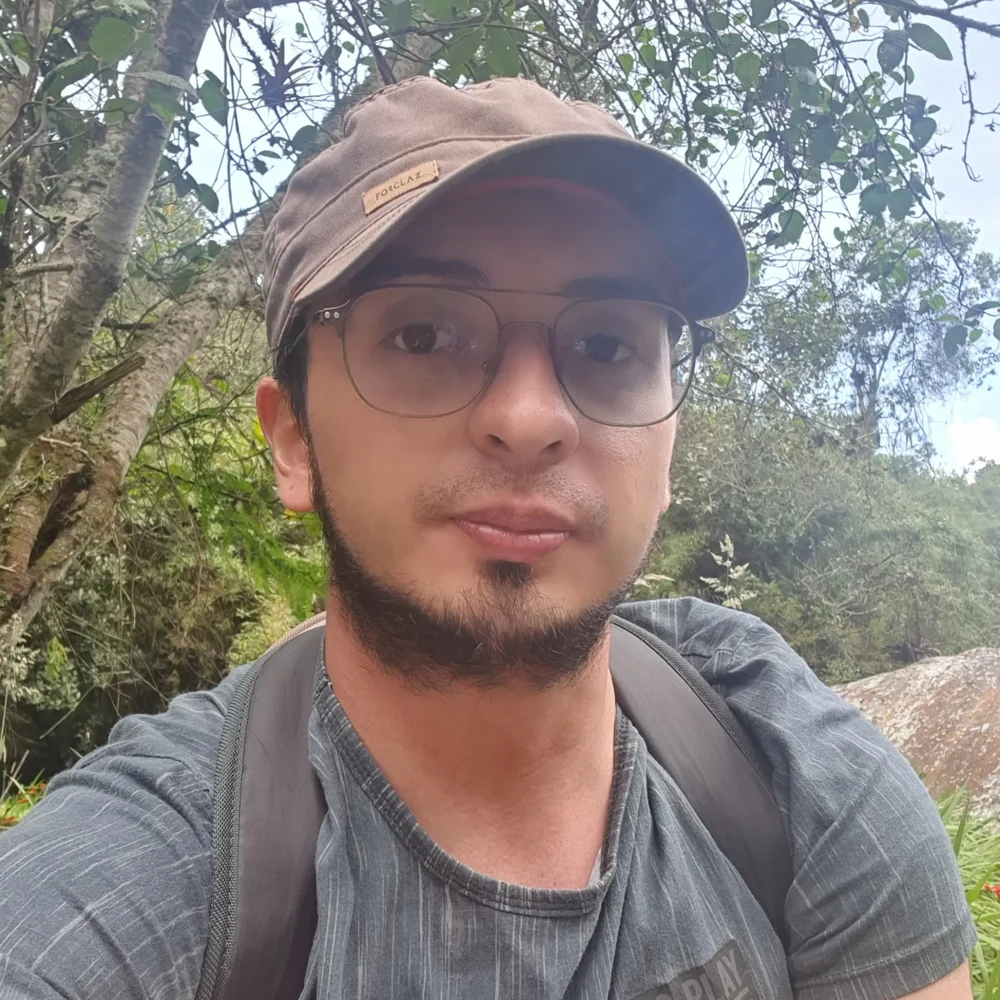This is the ninth short news article written by students, during the professional development class of Spring 2025, about each other's research.

Rubén Martín
Student Spotlight: Rubén Martín
By Paige Alexander
In one of the most ecologically diverse regions of the world, it is easy to overlook some of the smallest residents. When one envisions the landscapes of South America, perhaps the first images that come to mind are lush forests or mountain ranges stretching endlessly into the horizon. Amidst the mesmerizing flora and fauna of the system, it's easy to forget a crucial component of these vibrant ecosystems – pollinators! Rubén Martín, a Ph.D. student in Dr. Margarita López-Uribe's lab at The Pennsylvania State University, has the formidable task of characterizing the bumble bees of this breathtaking region.
For Martín, it was love at first sight.
"The first time I looked at a bee under the microscope, I fell in love. Before that point, I thought there was really only one bee – the honey bee. However, the moment I saw the intricate details of the bumble bee under the [micro]scope, my world got a whole lot bigger."
Martín's research is focused on unraveling the complicated genetic histories of the bumble bees that reside in this region of great biodiversity. Specifically, he aims to investigate the population genetics of two bumble bee species, Bombus (Cullumanobombus) funebris Smith and Bombus (Cullumanobombus) rubicundus Skrikov. Martín will explore how geographic barriers influence gene flow between different populations of these species.
Pollinators play a vital role in ecosystems, and this holds true even in neotropical regions. However, there is still little information available on the genetics and speciation of these bee species. In Colombia, the rugged Andes Mountains carve deep divides across the landscape. The flora and fauna of the region have adapted to ecological niches along these dramatic elevation changes, and bumble bees are no exception. These two species, B. funebris and B. rubicundus, have evolved to inhabit the high-altitude "sky islands" of the Andes, with minimal overlap between populations at these peaks. They are the major pollinators of these tropical alpine ecosystems as they are responsible for the pollination of nearly 50% of the plant species in these habitats. Yet, key questions remain: Are there significant genetic differences between these populations? And how does the physical barrier of the mountains influence gene flow? Martín's research seeks to bridge these knowledge gaps.
His goal is to further characterize bumble bee species – such as those found along Colombia's Andes – that have not been previously studied in depth. By employing advanced genetic techniques like whole genome sequencing, genome association testing, and population structure analysis, he hopes to reconstruct the evolutionary history of these bees. His research will determine whether these bumble bees can defy the rugged expanse of the Andes, crossing the vast gaps between sky islands, or if these towering peaks have locked them into isolated evolutionary paths. By analyzing the genetic variation within these populations, Martín hopes to uncover the extent of their connectivity and the role of geographic barriers in shaping their evolutionary history.
Martín's work comes at a critical time, as the region he studies faces increasing pressures from climate change. It remains uncertain how these environmentally sensitive bees will respond to rising temperatures. In these unpredictable times, Martin hopes his research will contribute to the conservation of bumble bees – after all, they are the backbone of the tropical alpine ecosystem.
Martín is a Ph.D. student in the College of Agricultural Science, Department of Entomology, at The Pennsylvania State University in Dr. Margarita López-Uribe's lab. His research is supported by funding from The Pennsylvania State University, College of Agricultural Sciences Strategic Networks and Initiatives Program, Cohort Grant.

